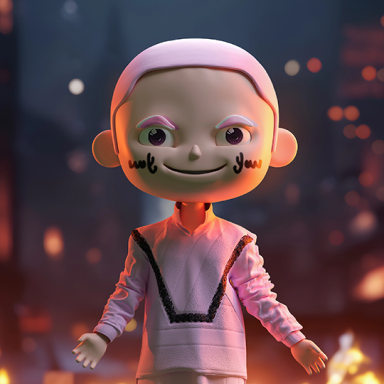Yaw AI
PRODUCT MANAGEMENT
UI/UX
LEADERSHIP

What is Yaw AI?
It is a brand new AI-chatting experience that made group chats 3D. With multiple, distinct AI characters, avatar customization, and a dynamic environment,
users could interact with highly personalized AI experiences.
We achieved over 200k downloads in just a few months across Android and iOS. I was in charge of the design team and headed multiple cross-team projects.
01

A New Direction?
Previously, our app was meant to be a social space where friends could keep up with each other, play games together, and build relationships through their avatars.
However, with the emerging AI market, the founders and their investors wanted to change directions and capitalize on this new trend. While the CTO handled all
AI development, they tasked me with getting the product and design ready for the change.
02
My Constraints
This new version was going to require a lot of work, so I had a few constraints to follow to make sure it all came together well:
- Keep the 3D avatars: The founders wanted to keep them to continue exploring a new medium for AI chats.
- Be as efficient as possible: I had to take developmental time into account for every single change I considered.
- Minimize design workload: The design team needed enough space to fully flesh out the 3D chat experience.
03
The 3D Chatrooms
A fully 3D chat meant a new environment was necessary. We aimed for two, but we were successful in creating three distinct rooms. By recycling and retexturing existing props from the previous status animations, we expedited the process, which meant more time for the development team to test their chat's functionality.



04
Meet the New AI Characters
After some marketing tests, we found the most appeal was with characters that were colorful, distinct, and somewhat futuristic. This presented more opportunities for advertising and managing consistent themes in the app. We built characters based on unique personas to best show this off, and we began to build the app around this concept. We had seven characters designed, with five being deployed in the app. These are some of the ones available:



05

Improving Onboarding
Many users were falling short of completing every milestone event during onboarding. Most users did not grasp the concept of adding both AI and real friends into the chat.
I came up with the concept of a mixed tutorial and early chatting experience. AI characters would chat with the user, add others automatically, and suggest inviting friends in a way that clearly
showed the user how the rooms worked.
We saw improvements in milestone-count, and user retention and acquisition also benefitted from the changes.
06

Improving the Chat
Many users were not exploring the other AI characters; different personalities were not interesting enough to switch.
I suggested the idea of tying characters to use-cases that matched their personalities. We could make them far more interesting if they became more niche. Not only would users chat with more variety,
but it would also help us further stand out from other AI chatting apps.
We saw really great success with our language-tutor and pop-culture characters. User retention improved and two other characters were finally getting involved.
07

Improving App Performance
With a bulk of our users on Android, we faced many bottlenecks with lower-level devices, particularly frame rate and power consumption in the chatrooms.
I recommended we move away from full avatar customization towards outfits. We could create higher quality clothing, minimize load, and save space all at once.
With more efficient and better designs, our marketing was more cohesive, our app expanded to an even wider audience, and the quality of the chat was improved.
We created 50+ outfits to change customization.
08

The New Yaw
Changing Yaw from a casual, social app to a completely new AI chatting experience was definitely a challenge, but we were able to accomplish a lot in a very short amount of time.
With careful planning and close collaboration, we were able to get everything finished, tested, and improved upon for multiple rounds of updates.
Note: The iOS app, where a bulk of the visual improvements were successfully implemented, was eventually delisted from the App Store by the founding team.
09
Tools & Skills Used
For Design: Figma, Blender, Adobe Photoshop, Adobe Illustrator
For Product Management: Notion, Firebase, Jira, Loom
Skills Involved: UI/UX Design, Product Management, Project Planning, Cross-Team Collaboration, Problem Solving, Data Analysis, Wireframing

